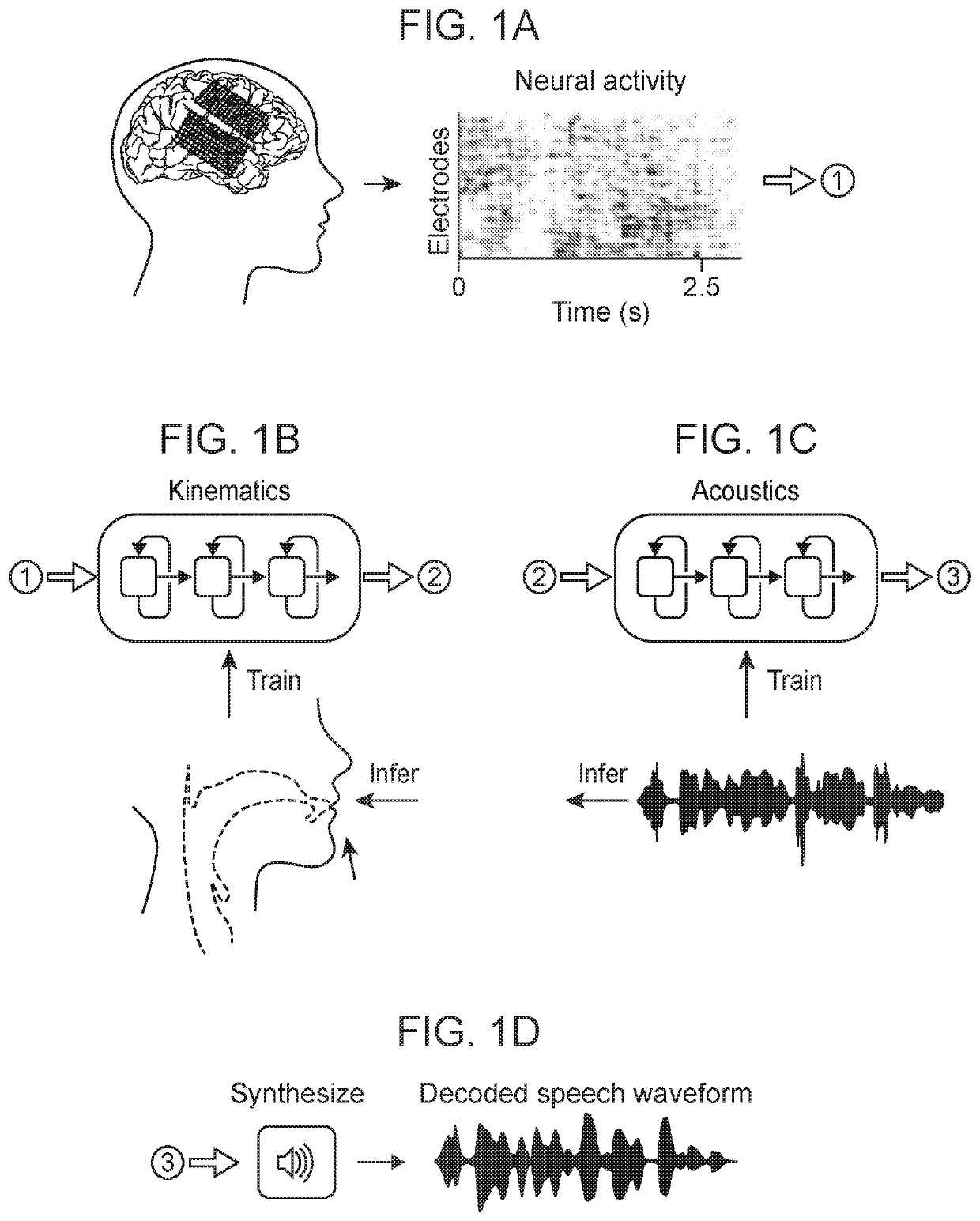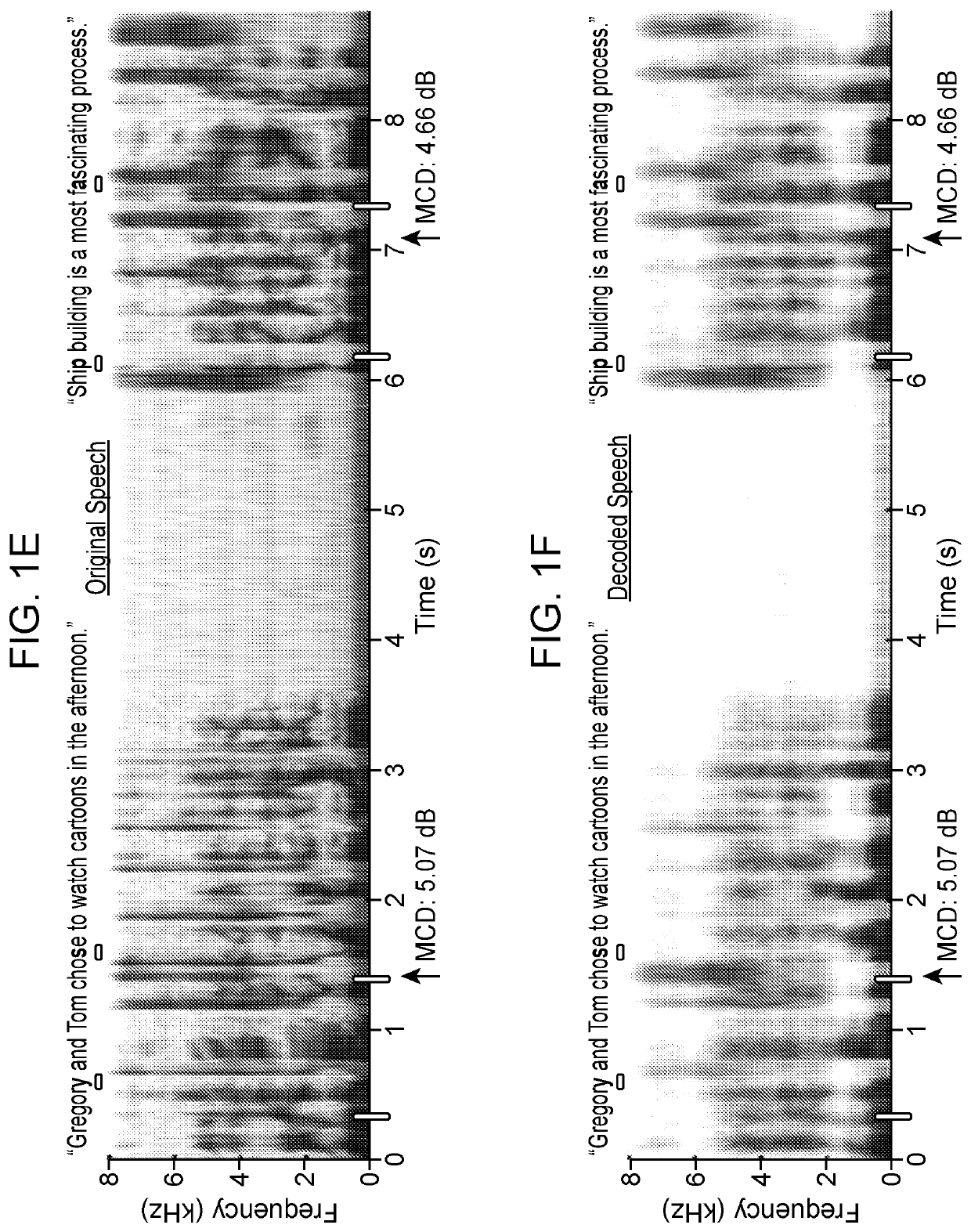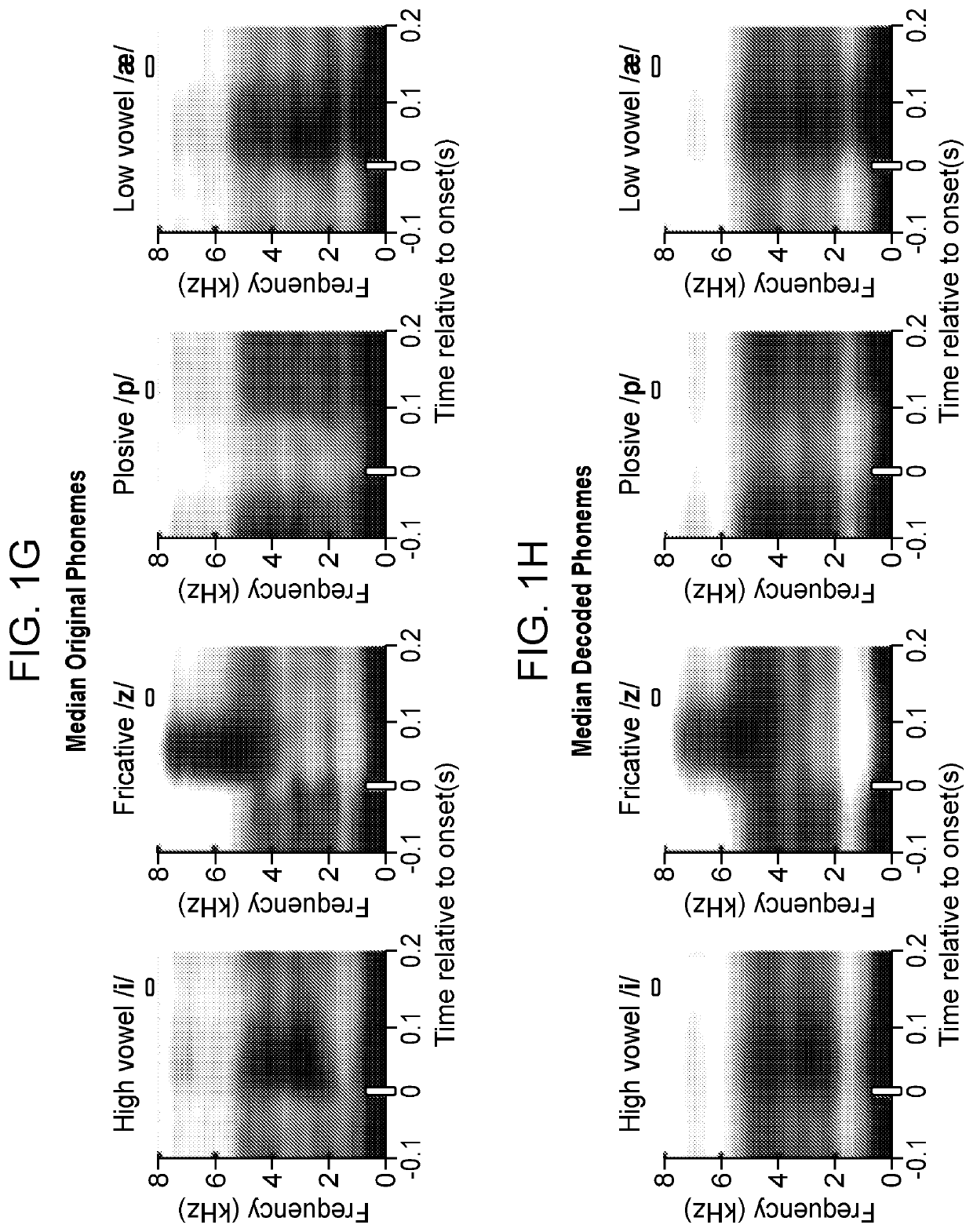Method of Contextual Speech Decoding from the Brain
a contextual speech and brain technology, applied in the field of contextual speech decoding from the brain, can solve the problems of overcoming the constraints of current, unable to transmit more than 10 words/minute, and unable to meet the needs of users, so as to improve speech decoding
- Summary
- Abstract
- Description
- Claims
- Application Information
AI Technical Summary
Benefits of technology
Problems solved by technology
Method used
Image
Examples
example 1
nthesis from Neural Decoding of Spoken Sentences
[0327]A neural decoder was designed that explicitly leverages kinematic and sound representations encoded in human cortical activity to synthesize audible speech. Recurrent neural networks first decoded directly recorded cortical activity into articulatory movement representations, and then transformed those representations into speech acoustics. In closed vocabulary tests, listeners could readily identify and transcribe neurally synthesized speech. Intermediate articulatory dynamics enhanced performance even with limited data. Decoded articulatory representations were highly conserved across speakers, enabling a component of the decoder be transferrable across participants. Furthermore, the decoder could synthesize speech when a participant silently mimed sentences. These findings advance the clinical viability of speech neuroprosthetic technology to restore spoken communication.
[0328]A biomimetic approach that focuses on vocal tract ...
example 2
Decoding of Question-and-Answer Speech Dialogue Using Human Cortical Activity
[0380]Although this work shows a very simple demonstration by decoding the context based priors on brain activity evoked while the patient listened to a question, the approach can be generalized to include more complex contexts. In addition, the decoding targets don't need to be limited to answer responses to questions; they can be any speech targets, including single-word targets and “continuous” sentences of arbitrary lengths with large vocabulary sizes. Additionally, neural signals can be generalized beyond ECoG to modalities such as intracranial spike recordings and even non-invasive recording methods including fMRI or optical sensing methods (such as fNIRS).
[0381]While participants performed a question-and-answer natural speech perception (FIG. 7A) and production (FIG. 7B) task, neural activity was acquired from high-density ECoG arrays that covered auditory and sensorimotor cortical regions. In real-t...
example 3
Speech from the Human Cortex
[0462]The present disclosure shows spoken speech from cortical activity, an enterprise with both scientific and practical implications. Taking a cue from recent advances in machine translation and automatic speech recognition, a recurrent neural network (RNN) was trained to map ECoG signals directly to sentences.
[0463]In particular, an encoder-decoder framework was used that first encodes a sequence of neural activity into an abstract sentence representation, and then decodes this representation, word by word, into an English sentence. Each element of the input sequence is a vector, corresponding to a single sample of the envelope of the high-frequency (70-150-Hz) component of the ECoG signal at each of about 250 electrodes distributed over peri-Sylvian speech cortices. Each element of the output sequence is a single word from a small (˜200-2000-word) vocabulary, the entire sequence composing the sentence that coincided with the ECoG input sequence. Acros...
PUM
 Login to View More
Login to View More Abstract
Description
Claims
Application Information
 Login to View More
Login to View More - R&D
- Intellectual Property
- Life Sciences
- Materials
- Tech Scout
- Unparalleled Data Quality
- Higher Quality Content
- 60% Fewer Hallucinations
Browse by: Latest US Patents, China's latest patents, Technical Efficacy Thesaurus, Application Domain, Technology Topic, Popular Technical Reports.
© 2025 PatSnap. All rights reserved.Legal|Privacy policy|Modern Slavery Act Transparency Statement|Sitemap|About US| Contact US: help@patsnap.com



